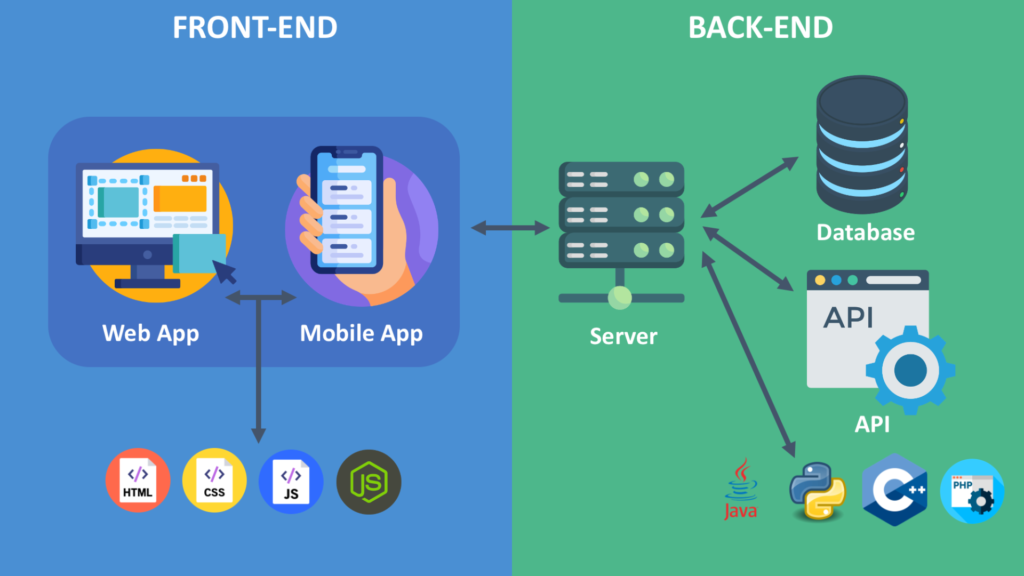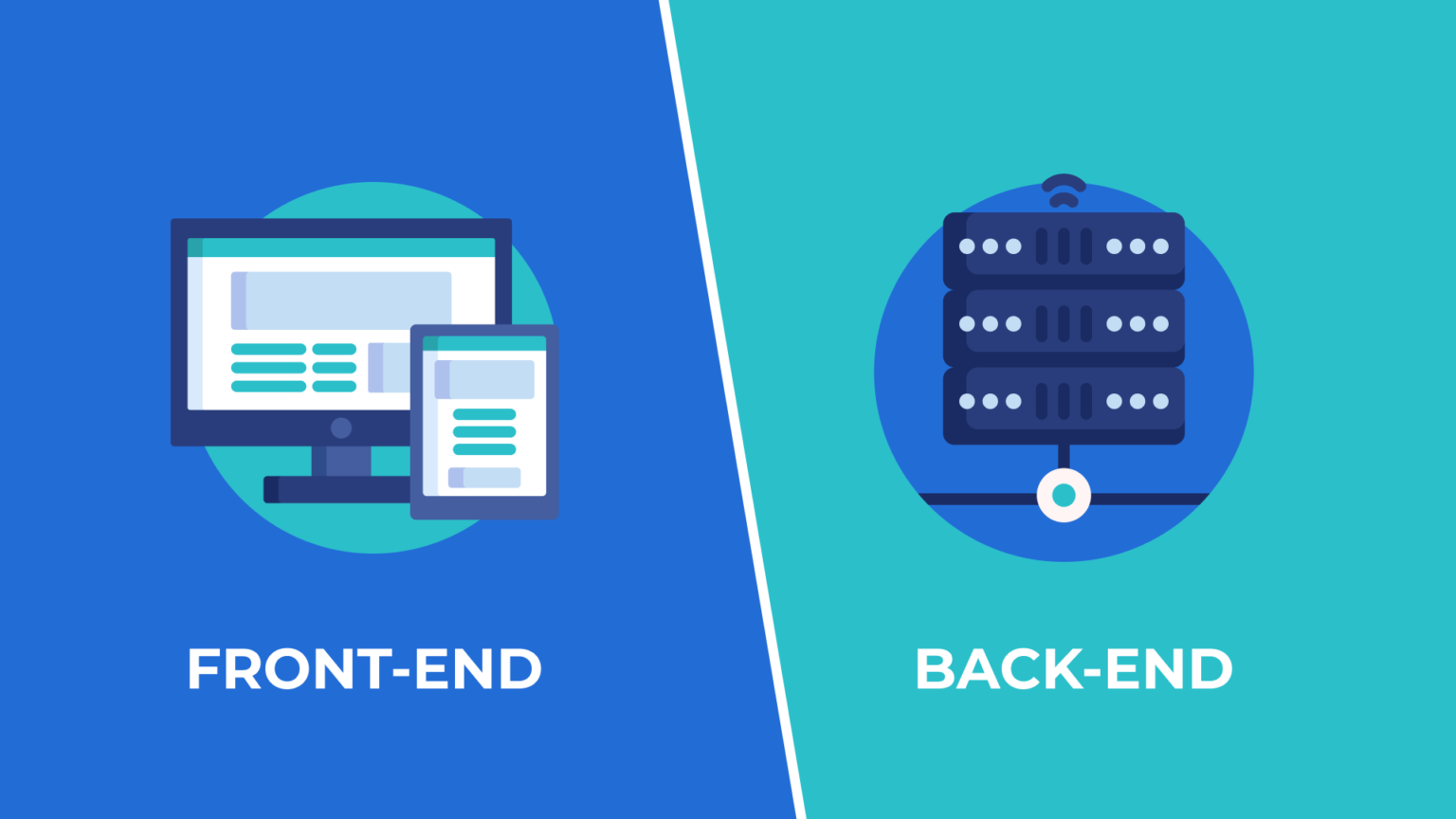If you’re new to computer programming and exploring career options, you’ve probably heard the terms front-end development and back-end development. Both fields offer rewarding career paths, but they require different skills, focus on different aspects of development, and often attract people with different interests. To make an informed decision, it’s essential to understand the core responsibilities, skills, and projects associated with each.
This guide will dive into the main distinctions between front-end and back-end development, the required skill sets, and tips for choosing the path that’s right for you.

What is Front-End Development?
Front-end development is all about creating the user interface (UI) and ensuring that users have a seamless, interactive experience on a website or app. It involves everything users interact with visually, from layout and design to buttons, text, and images.
Key Responsibilities of Front-End Developers
Front-end developers focus on how a website looks and feels. Their work includes:
- Designing and Implementing UI: Working with HTML, CSS, and JavaScript to design the visual elements.
- Enhancing User Experience: Ensuring responsive design for various devices and screen sizes.
- Improving Interactivity: Using JavaScript and libraries like React, Angular, or Vue to add interactive features.
- Testing and Debugging: Identifying and fixing bugs, often with the help of developer tools in browsers.
If you enjoy visual design, coding exercises that focus on UI/UX, and enhancing the user experience, front-end development may be an ideal choice.
Key Skills for Front-End Development
To succeed as a front-end developer, you’ll need the following skills:
- HTML/CSS: The building blocks of web pages, allowing you to structure content and style it.
- JavaScript: Essential for adding interactivity, animations, and more.
- Responsive Design: Ensures that your website looks good on desktops, tablets, and smartphones.
- Version Control (Git): Helps you track changes and collaborate with other developers.
What is Back-End Development?
While front-end developers work on what users see, back-end developers focus on the behind-the-scenes aspects of a website or application. Back-end development is about managing databases, servers, and application logic to ensure that the website functions as intended.
Key Responsibilities of Back-End Developers
Back-end developers handle the technical infrastructure and business logic. They are responsible for:
- Database Management: Creating and managing databases to store and retrieve data.
- API Development: Building APIs that allow different parts of an application to communicate.
- Server Management: Setting up and maintaining servers to ensure stability and performance.
- Security: Implementing security measures to protect data and user privacy.
If you’re interested in the logical side of programming, working with servers, and handling data, back-end development could be the right fit.
Key Skills for Back-End Development
Back-end developers need a different set of skills, including:
- Programming Languages: Popular choices include Python, Ruby, PHP, Java, and JavaScript (Node.js).
- Databases: Understanding SQL (MySQL, PostgreSQL) and NoSQL (MongoDB) databases is essential.
- APIs: Building and managing APIs for data transfer between the server and the client.
- Algorithms and Data Structures: Essential for optimizing performance and ensuring that applications are scalable.
How Front-End and Back-End Work Together
Front-end and back-end developers often collaborate to create a cohesive application. For example, a front-end developer may design a login page, while a back-end developer sets up the authentication process on the server. This synergy is crucial in modern development, and if you enjoy both aspects, you might consider pursuing a career in full-stack development.
Full-stack developers are skilled in both front-end and back-end development, making them versatile assets in tech teams. Many coding workshops and programming lessons offer full-stack tracks that cover both sides, allowing you to understand the complete flow of data from the server to the user interface.
Tools and Technologies: Front-End vs. Back-End
Let’s break down some commonly used tools and technologies in each field.
Front-End Tools
- HTML/CSS/JavaScript: Core languages for web development.
- React, Vue, Angular: Popular JavaScript frameworks for creating dynamic interfaces.
- Bootstrap: A CSS framework for building responsive designs quickly.
- Sass: A CSS preprocessor that enhances styling capabilities.
Back-End Tools
- Node.js, Python, Ruby, Java: Common programming languages for server-side development.
- Express, Django, Flask: Frameworks for building and managing server-side logic.
- MySQL, MongoDB: Database options for storing and retrieving data.
- Docker: A tool for containerizing applications, making them easier to deploy.
These tools often overlap in full-stack development. Learning a combination of these technologies can provide a comprehensive skill set that’s highly sought after in today’s job market.
Which Path is Right for You?
Choosing between front-end and back-end development depends on your interests and career goals. Here are some factors to consider:
Choose Front-End Development If You:
- Enjoy designing user interfaces and creating visually appealing layouts.
- Like focusing on user experience and crafting interactive elements.
- Prefer to see immediate, visual results of your work.
- Want to specialize in responsive design for various devices.
Choose Back-End Development If You:
- Are interested in logic, data structures, and algorithms.
- Enjoy managing and organizing data, databases, and servers.
- Want to focus on the functional aspects of applications.
- Like problem-solving and creating efficient, scalable solutions.
Getting Started: Resources for Both Paths
Whether you’re leaning towards front-end, back-end, or even full-stack, there are plenty of resources available to get you started.
- Online Coding Tutorials: Platforms like Codecademy, freeCodeCamp, and Udacity offer courses in both front-end and back-end development.
- Coding Exercises: Websites like HackerRank and LeetCode provide coding exercises and coding challenges that focus on both front-end and back-end skills.
- Coding Workshops: Many coding bootcamps offer workshops that specialize in front-end, back-end, or full-stack development, making it easier to choose a track.
- Programming Projects: Building small projects, such as personal websites (front-end) or basic APIs (back-end), is a great way to practice what you’ve learned and build your portfolio.
Salaries and Job Outlook
Both front-end and back-end developers are in high demand, with competitive salaries in the tech industry. According to recent data, entry-level front-end developers in the U.S. can expect an average salary of $60,000 to $80,000, while back-end developers can earn between $70,000 and $90,000. Full-stack developers, due to their versatile skill set, often command even higher salaries.
In terms of job outlook, both fields offer strong growth opportunities, especially as more businesses transition online and require robust web applications. From e-commerce sites to social media platforms, skilled developers are crucial for creating engaging and functional user experiences.

Front-End, Back-End, or Both?
Ultimately, the choice between front-end and back-end development depends on where your interests lie. If you’re passionate about design and interactivity, front-end development may be more suited to your strengths. If you enjoy working with databases, logic, and servers, back-end development might be the right choice.
For those who can’t choose, full-stack development provides the best of both worlds, allowing you to build complete applications from start to finish. Whichever path you choose, remember that coding is a journey, and the most important part is to keep learning and practicing. Embrace the coding education resources available, engage in programming lessons, and take on real-world programming projects to grow as a developer.




